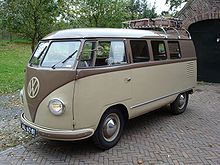
VW Transporter history and some interesting Transporter events over time.....
Background.....
(Part sourced from
Wikipedia and the State Library of Queensland
The Volkswagen Transporter
series, also referred to as the
Volkswagen Group T platform series, refers to several generations of
motor vehicles from the
Volkswagen Group, starting with the original
Volkswagen Type 2.
T1 Type 2 (1950-1967)

Volkswagen Type 2 (T1)
Initially derived from the Volkswagen Type 1 (Volkswagen
Beetle), the Volkswagen Type
2 (T1) was the first generation of
Volkswagen's hugely successful Transporter family. Known informally
by enthusiasts as "split screens" or "splitties" due to the front windscreen
being split in two.
T2 Type 2 (1967-1979)
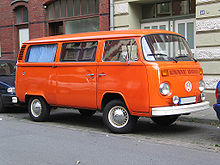
Volkswagen Type 2 (T2b)
The Volkswagen T2 platform is
basically a cosmetically upgraded T1 (since only one vehicle shares the platform
at this point, the distinction is used for both the Volkswagen Type 2 generation
and platform), with a
Volkswagen Type 4 engine optionally available from 1972 on. This
generation was informally known as "bay" (derived from
bay window) or "bread loaf".
T3 Type 2
(1979-1992)
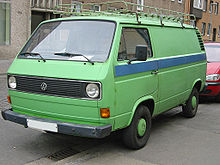
Volkswagen Type 2 (T3/Vanagon/T25)
The Volkswagen Type 2 (T3), also
known as the T25, or Vanagon in
the
United States, was one of the last new Volkswagen platforms to use an
air-cooled engine. The
Volkswagen air cooled engine was phased out for a
water-cooled
boxer engine (still
rear mounted) in 1984.
T4 Transporter (1990-2003)
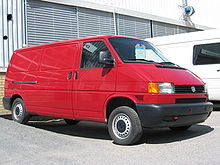
Volkswagen Transporter (T4)
The first officially designated "T platform" vehicle, the
Volkswagen Transporter (T4)
dramatically updated the Volkswagen van line by using a
front-mounted,
front-wheel drive, water-cooled engine.
T5 - Transporter (2003-present)
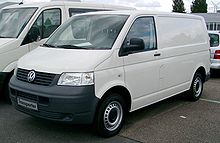
Volkswagen Transporter (T5)
The Volkswagen Transporter (T5)
is the current variant of the Volkswagen T platform. In
North America it is sold only in Mexico but not in the United States
or Canada. The
U.S. market does not receive the T5 range due to it being classed as
a light truck, which thereby automatically includes a 25% extra tax (known as
the
chicken tax) on importation into the US.
The Transporter T5 range received a
facelift in late 2009. Updated
power train options include
common rail diesel engines, and a world-first usage in a light
commercial vehicle of a
dual clutch transmission - namely Volkswagen Group's 7-speed
Direct-Shift Gearbox (DSG).
Other Stuff....
So why is a Transporter called a Kombi?
This article by
Phoenix Delray best sums
it up....The name Kombi is a German name that means combined use vehicle. From
the very first Volkswagen Kombi that rolled off of the lines, the Kombi has
always been one of the most recognized and beloved vehicles in the history of
the automobile. In fact, no other make and model of car has been given so many
different nicknames in so many different countries around the world as the Kombi
has. Some of the most popular nicknames for the Kombi are the Bully, Hippie Van,
VW Bus, and simply The Bus.
In South Africa, the Kombi is called a Volksie Bus, and is prominent in many
South African commercials. Kombi is also a generic nickname for vans and mini
buses there. In the United Kingdom, the VW Bus is known as a Hippy Van, a Vdub,
or a Campervan. Only a vehicle as loved as the Kombi could have so many terms of
endearment attached to it.
When it was to be initially released, the Kombi was meant to officially start
out being named The Bully, but many other nicknames soon became associated with
the Kombi. The Kombi was then released being known as the VW Transporter or the
VW Kleinbus, but in the end, the name Bully still caught on. Kombi is not only
the nickname of the passenger VW Bus, but it is also a term in Australia, Asia,
and Brazil for the whole Type 2 family. This is a pretty similar pattern to the
way that the Kombi Bus family is called VW Bus in Germany. Even the pick up
truck models are nicknamed the Kombi.
In Denmark, the Kombi is referred to as Rye Bread. The Finns have named the
Kombi the Kleinbus or the mini bus, because many taxi cab companies and
transportation companies have adopted it for groups of people and their
transportation needs. As a result, the name Kleinbus has become the general
nickname for any and all passenger vans there.
In Mexico, the Kombi was translated as Combi and became a very common vehicle in
Mexico, thanks to the public transportations systems heavy use of the Kombi. In
Peru, where they also called the vehicle a Combi, the term Murdering Combi was
often used for the VW Bus and also for others that are similar in size. In
Portugal, the VW Bus is affectionately named the Breadloaf because of its
designs resemblance to bread that is baked in a mould.
In the United States, the Kombi has earned the nicknames of vee dub, hippie
mobile, hippie bus, hippie van, and combie. Also, they are known here as a
Microbus or sometimes even a Transporter. The earliest versions of the Kombi had
a split front windshield, earning those models the nickname Splitty. These
models are now rare, prized collectors items. The next version which was sold in
the country from 1968 to 1979 had a large, curved windshield and was commonly
called a bay window. It was replaced by the Vanagon, and the Westfalia camper
version that has a common nickname of Westy.
Some Kombi trivia.....
1949: Volkswagen unveiled its boxy Kombi van at the Geneva Motor Show. Most attendees mistook it for a shipping crate and were disappointed not to find a more svelte vehicle within. In fact, nobody quite understood the point of the Kombi until nearly 20 years later, when hippies were invented. The Kombi gave hippies a home. A home that, to everyone's convenience, could quietly be pushed out of town after nightfall.
1987: One of Bruce's favourite movies Travelling North (based on the David Williamson play) features a VW Kombi. At the beginning of Travelling North, the main character Frank (played by the late Leo McKern) is planning to move from Melbourne, Australia, to an idyllic retreat in North Queensland with a woman 15 years his junior. Driving a Kombi of course! The woman, Frances (Julia Blake), loves Frank dearly, and their union amidst the chirping birds, tropical greenery and waterfront sunsets promises to be perfect despite rumblings from Frances' grown daughters who resent their mother's new-found romance. This is no simple feat, given Frank's stubborn manner and his unbridled tongue. Frank becomes a man one grows to admire and whose inevitable demise is very sad....
2006: Another great fun film that featured the Kombi was Little Miss Sunshine starring Abigail Breslin.
2006: VW's hippie bus has a fascinating local connection. The ABCs Lateline TV program revealed that our recent Prime Minister Kevin Rudd spent part of his boyhood living in his mother's Kombi. (Rudd generally tells interviewers it was a car!) If anyone owns a Kombi with Mandarin characters scratched into it, they are urged to contact the National Museum or us!
May 2008:The Kombi at the centre of one of Australia's most infamous crimes, the murder of British backpacker Peter Falconio on July 14th 2001, is put up for sale in the Northern Territory. Apparently police auctioned the van in Darwin for the late Mr Falconio's girlfriend Joanne Lees, who is now back living in the United Kingdom. I would have like to have been there! The murder sparked one of the biggest manhunts in Australian history. Plus the Volkswagen Kombi got a lot of free advertising..... not sure if that was good or bad?